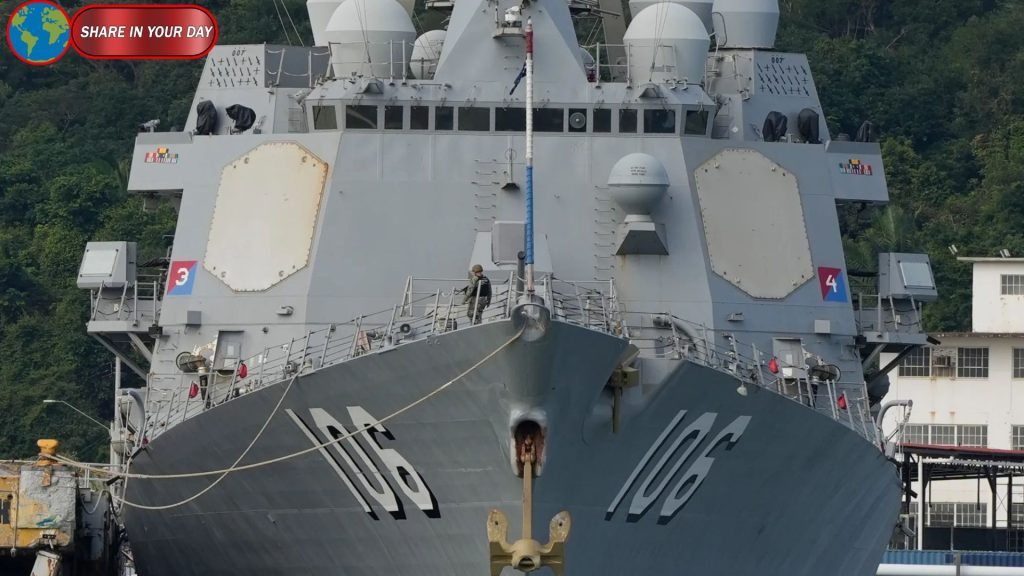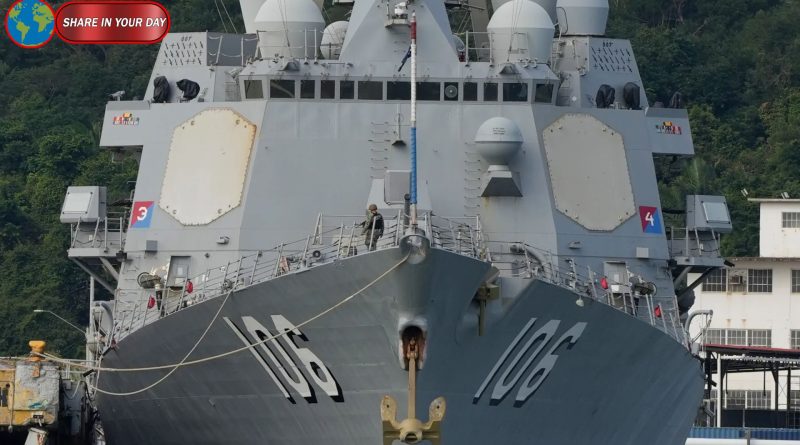U.S. Naval Build-Up Near Venezuela: Mission to Target Maduro, Not Just Drugs
Maduro, Not Just Drugs
In recent months, the United States Navy has deployed a significant number of warships and associated assets to the southern Caribbean — waters off the coast of Venezuela. While officially billed as a counter-narcotics operation, analysts suggest the move is more than just interdiction: it appears aimed in large part at exerting strategic pressure on Venezuelan President Nicolás Maduro and his government’s alleged links to drug trafficking and narco-terrorism.
The Force Deployment
The U.S. has shifted from its usual Coast Guard–led maritime anti-drug efforts to a heavier naval footprint in the region. Among the vessels reported: destroyers, a guided-missile cruiser, amphibious assault ships carrying Marine Expeditionary Units and helicopters, and possibly a nuclear-attack submarine.
One U.S. official described the purpose as supporting operations “that involve drug cartels” linked to Venezuela.
Beyond Drugs: Maduro in the Crosshairs
While combating narcotics remains the stated rationale, multiple sources argue the broader objective is geopolitical: punishing or deterring the Maduro regime over its alleged role in the drug trade and broader destabilisation of the region. For instance, one analysis argues the naval build-up serves as “gunboat diplomacy” aimed at Venezuela’s leadership.
The U.S. administration has, in public and private remarks, referred to Maduro and his circle as narcotraffickers and terrorists. Those signals, combined with the naval posture, suggest a dual mission: curb drug flows and weaken Caracas politically and economically.
Venezuela’s Response & Regional Tensions
President Maduro has strongly rejected U.S. claims and the naval presence, calling it “the greatest threat that has been seen on our continent in the last 100 years.”
Venezuela has meanwhile mobilised militia forces, deployed troops toward its borders, and warned it may declare a “republic in arms” should U.S. aggression continue.
Regional actors and analysts are watching closely, noting that while drug-interdiction is necessary, the scale and composition of the U.S. forces are uncharacteristic for a pure counternarcotics mission.
Legal & Strategic Questions
The U.S. has conducted strikes on suspected drug-trafficking vessels operating from Venezuela. One such action killed 11 people and raised significant legal questions over the use of naval and military assets instead of traditional law-enforcement agencies.
Critics argue the shifts suggest a possible military dimension beyond drug enforcement: insinuating regime pressure or even preparation for further action inside Venezuelan territory.
Dragonfly Intelligence
What This Means Going Forward
The naval deployment signals a new U.S. willingness to use heavier military tools in the Western Hemisphere for non-traditional missions.
For Venezuela, the message is clear: the U.S. perceives Maduro’s government not solely as a target of enforcement but as part of the broader strategy to counter illicit flows and regional instability.
The risk of miscalculation is high: Venezuelan military responses, regional push-back, and legal challenges could complicate the mission’s legitimacy.
For stakeholders in the region, this shift raises important questions about sovereignty, military engagement in drug war contexts, and the balance between enforcement and diplomacy.
Conclusion
The U.S. naval build-up near Venezuela goes beyond the typical to fight drug-trafficking at sea. While narcotics remain part of the framing, the evidence suggests the broader mission is to confront the Maduro regime, disrupt its alleged cartels links, and project U.S. resolve in the region. How effectively this strategy will work — and what unintended consequences may follow — remains to be seen





